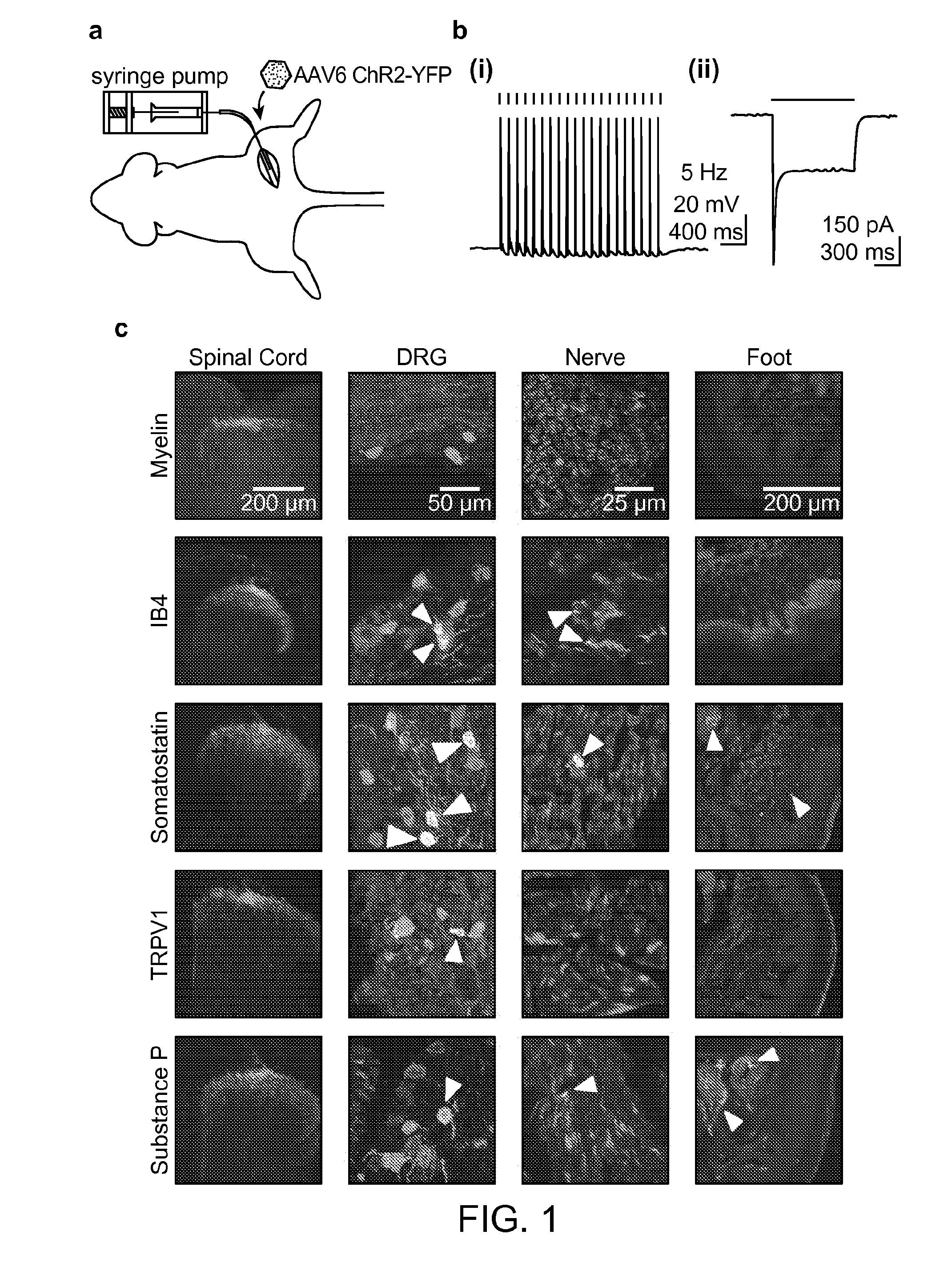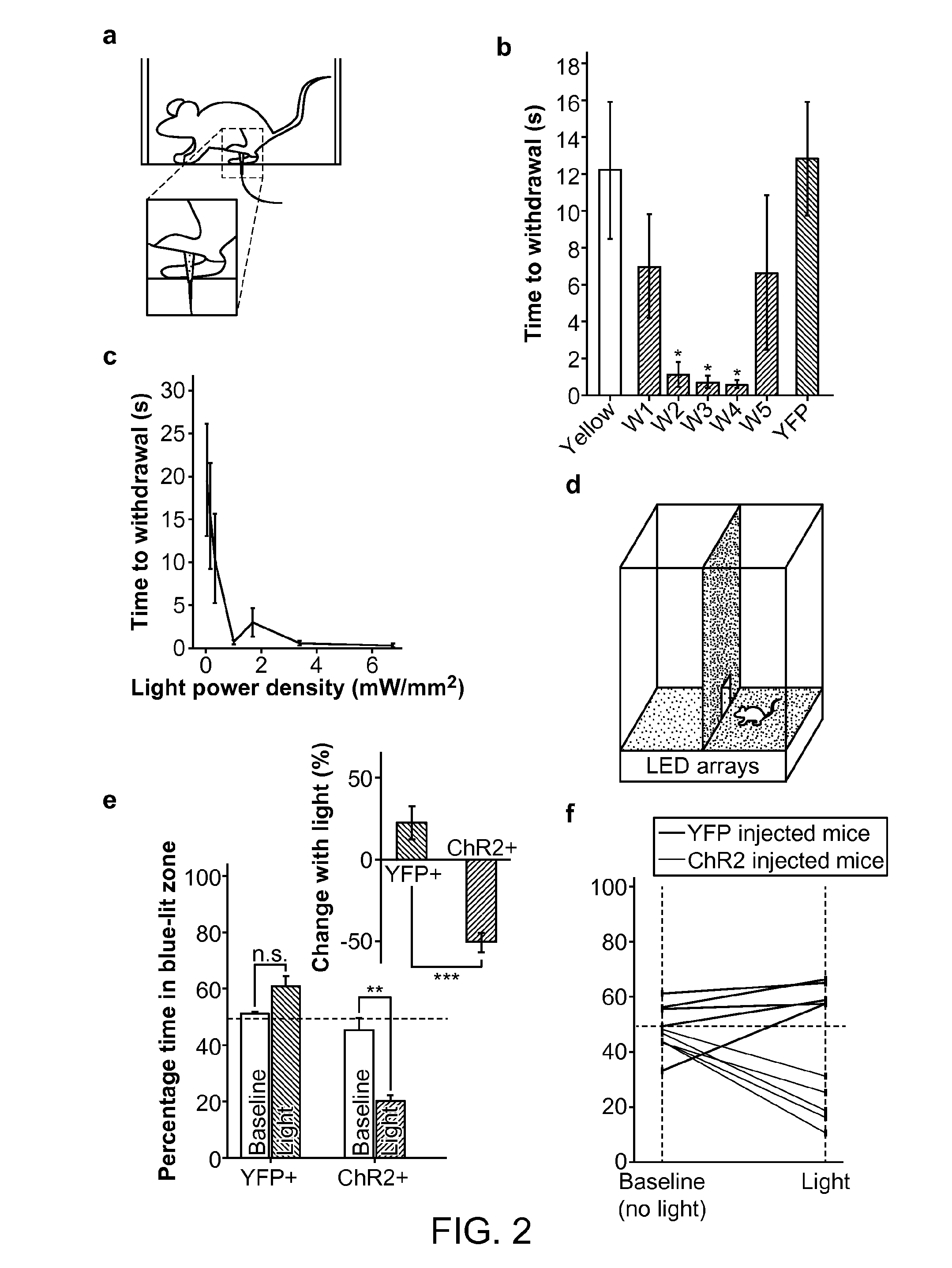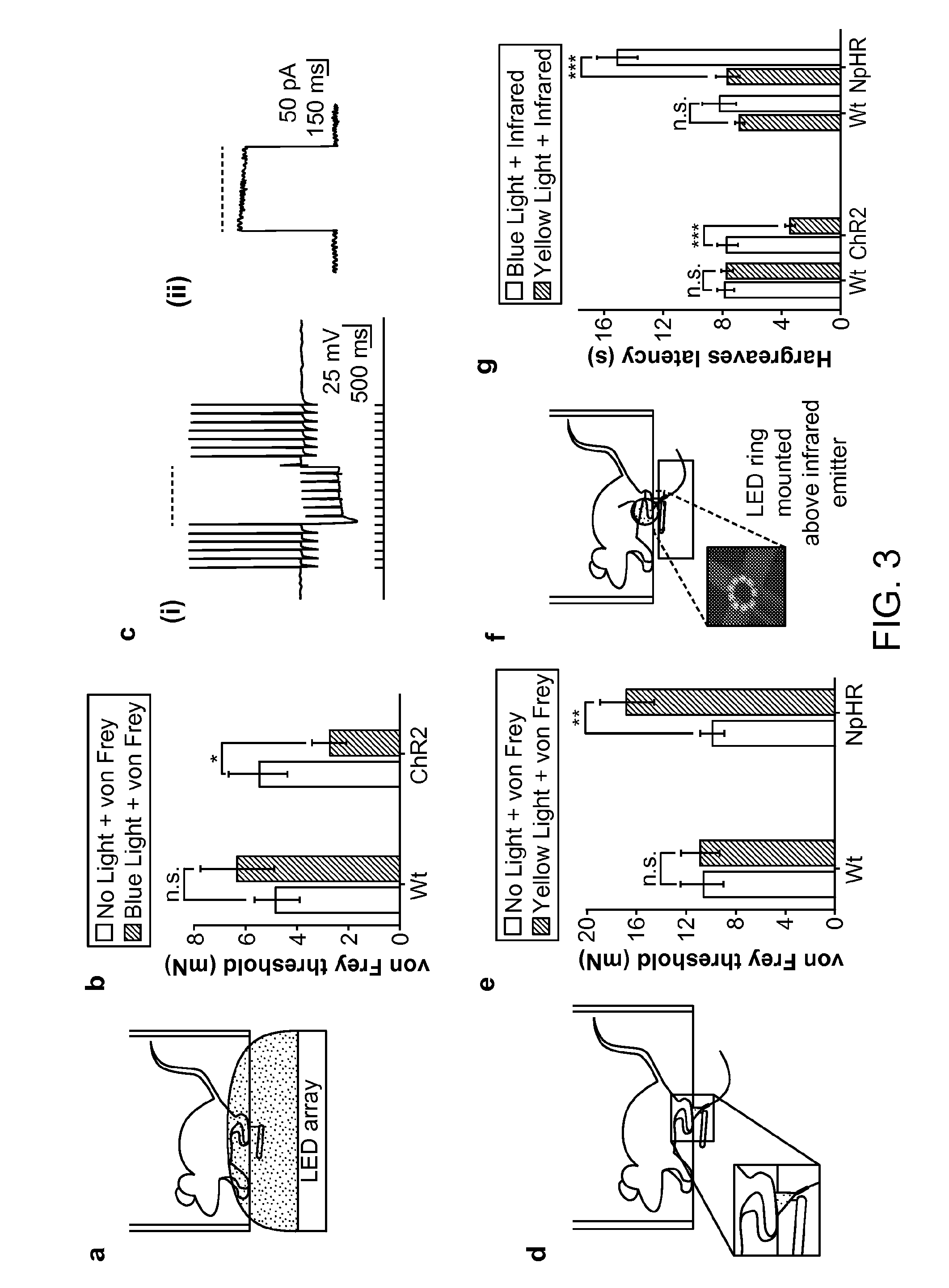Compositions and methods for controlling pain
a technology applied in the field of compositions and methods for controlling pain, can solve the problems of inability to spatially localize the control of nociceptors in freely moving animals, inability to excite and inhibit these neurons, and inability to achieve non-invasive control. , to achieve the effect of reducing pain and reducing pain
- Summary
- Abstract
- Description
- Claims
- Application Information
AI Technical Summary
Benefits of technology
Problems solved by technology
Method used
Image
Examples
example 1
Bidirectional Control of Pain
[0179]It is demonstrated here that optogenetics can be used to bidirectionally control acute pain in both normal and pathological states. A gene transduction strategy was used that is adaptable and clinically relevant. Adeno-associated virus serotype 6 (AAV6) was used. AAV6 has many attractive features; it has been used for gene delivery in non-human primates, and is a leading candidate for future use in human clinical trials15. It is also capable of retrograde transport, and can specifically transduce nociceptors through intraneural delivery, removing the need for risky dorsal root ganglion injections.
Materials and Methods
Animal Test Subjects and Experiments
[0180]All surgical and behavioral procedures were approved by the Stanford University
[0181]Administrative Panel on Lab Animal Care. Female C57BL / 6 mice (1-4 months old) were housed in groups of 5 under a 12:12 light:dark cycle. Food and water were available ad libitum.
Intraneural Injection of AAV6-hS...
example 2
Intraneurally Injected AAV8 Selectively Transduces Neurons that Project to Spinal Cord Dorsal Columns and Deep Spinal Cord Laminae
[0246]Large-diameter primary afferent neurons are responsible for mediating diverse sensory processes including pressure, vibration, pleasurable touch, and painful touch. In the context of pain research, these neurons are known to be significantly modified in various chronic pain disorders. Spontaneous (‘ectopic’) firing in these neurons is thought to be one of the major contributors to the development of inflammatory and neuropathic pain, either through their directly driving central pain pathways, or through modifying spinal cord circuitry to induce central sensitization. Optogenetic inhibition of these afferent neurons would reduce symptoms of neuropathic pain. Optogenetic stimulation of these afferent neurons may also act to reduce pain in some conditions, through multi-step circuit processes in the spinal cord that form part of the ‘pain gate’. The d...
example 3
Delivery of Optogenetic Proteins to Sensory Neurons of the Trigeminal Ganglion
[0250]Neuropathic pain can arise in the trigeminal ganglion and is often characterized by episodic, lancinating, triggerable, often shock-like facial pain. The disease can result from infection (e.g. herpes virus), facial trauma, stroke or surgical nerve damage. The data in this example demonstrate delivery of the inhibitory opsin, eNpHR3.0, to the sensory neurons of the trigeminal ganglion in rats. The data presented in this example demonstrate that optogenetics can be used to control pain involving the trigeminal ganglion.
Methods
[0251]Under anesthesia, 10-week old Sprague Dawley rats were stereotaxically injected with 1×1011 vg of AAV5-hSyn-eNpHR3.0 into the trigeminal ganglion. Animals were euthanized 4 weeks later, and the trigeminal ganglion was dissected, sectioned and imaged using a confocal microscope.
Results
[0252]Four weeks following direct injection of AAV5-eNpHR3.0-YFP, strong expression of the ...
PUM
| Property | Measurement | Unit |
|---|---|---|
| Fraction | aaaaa | aaaaa |
| Fraction | aaaaa | aaaaa |
| Mechanical properties | aaaaa | aaaaa |
Abstract
Description
Claims
Application Information
 Login to View More
Login to View More - R&D
- Intellectual Property
- Life Sciences
- Materials
- Tech Scout
- Unparalleled Data Quality
- Higher Quality Content
- 60% Fewer Hallucinations
Browse by: Latest US Patents, China's latest patents, Technical Efficacy Thesaurus, Application Domain, Technology Topic, Popular Technical Reports.
© 2025 PatSnap. All rights reserved.Legal|Privacy policy|Modern Slavery Act Transparency Statement|Sitemap|About US| Contact US: help@patsnap.com



